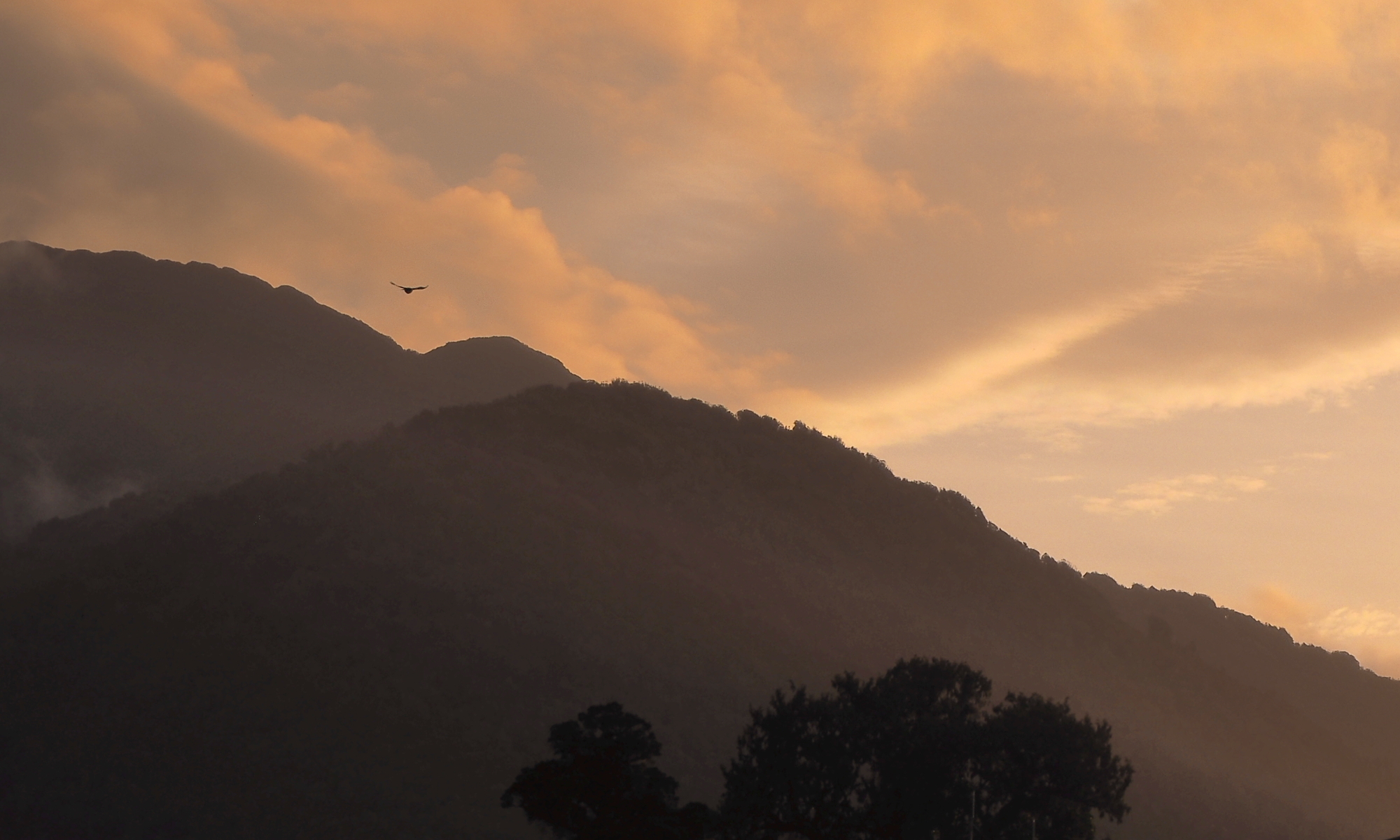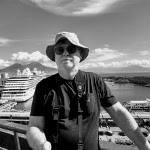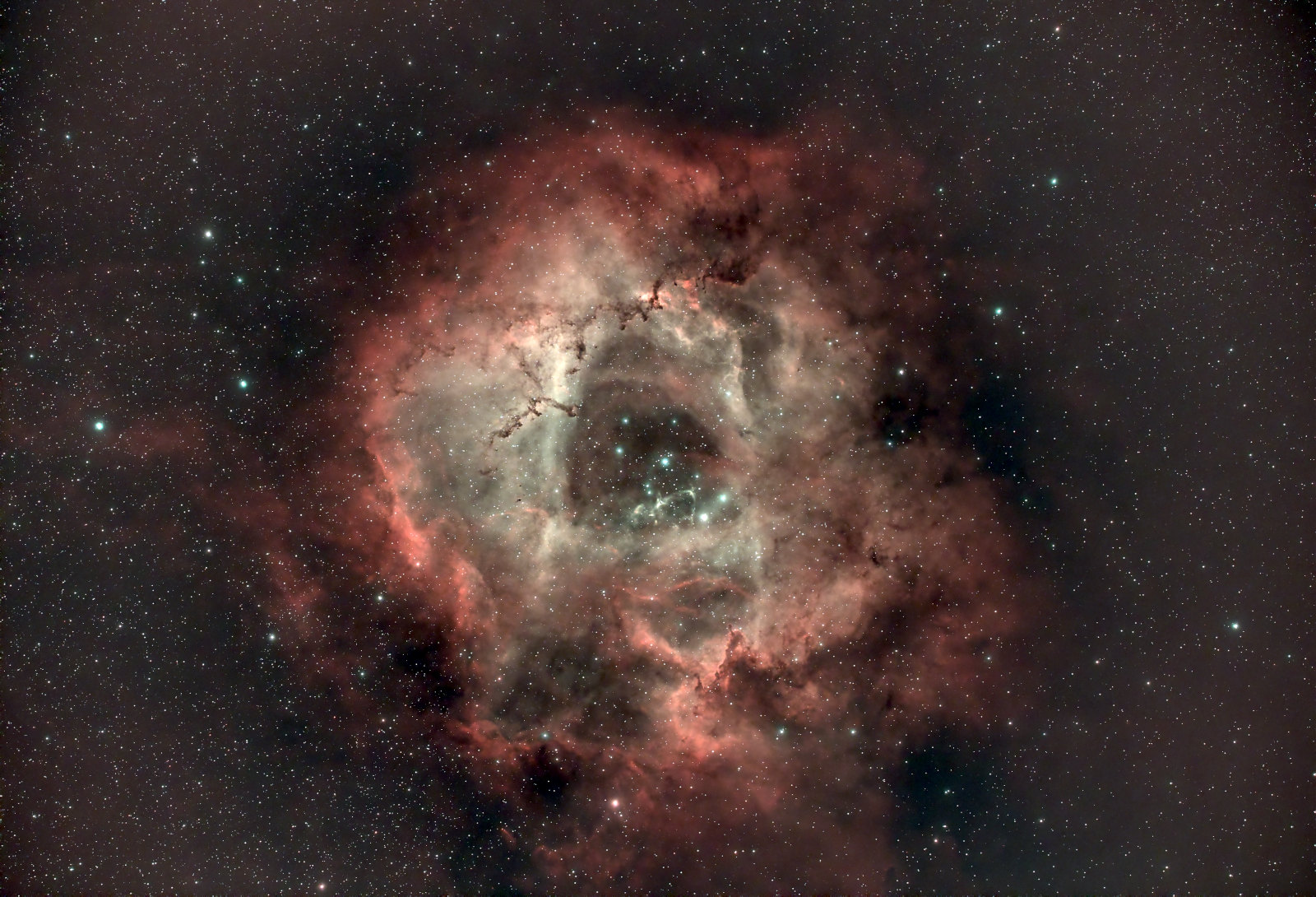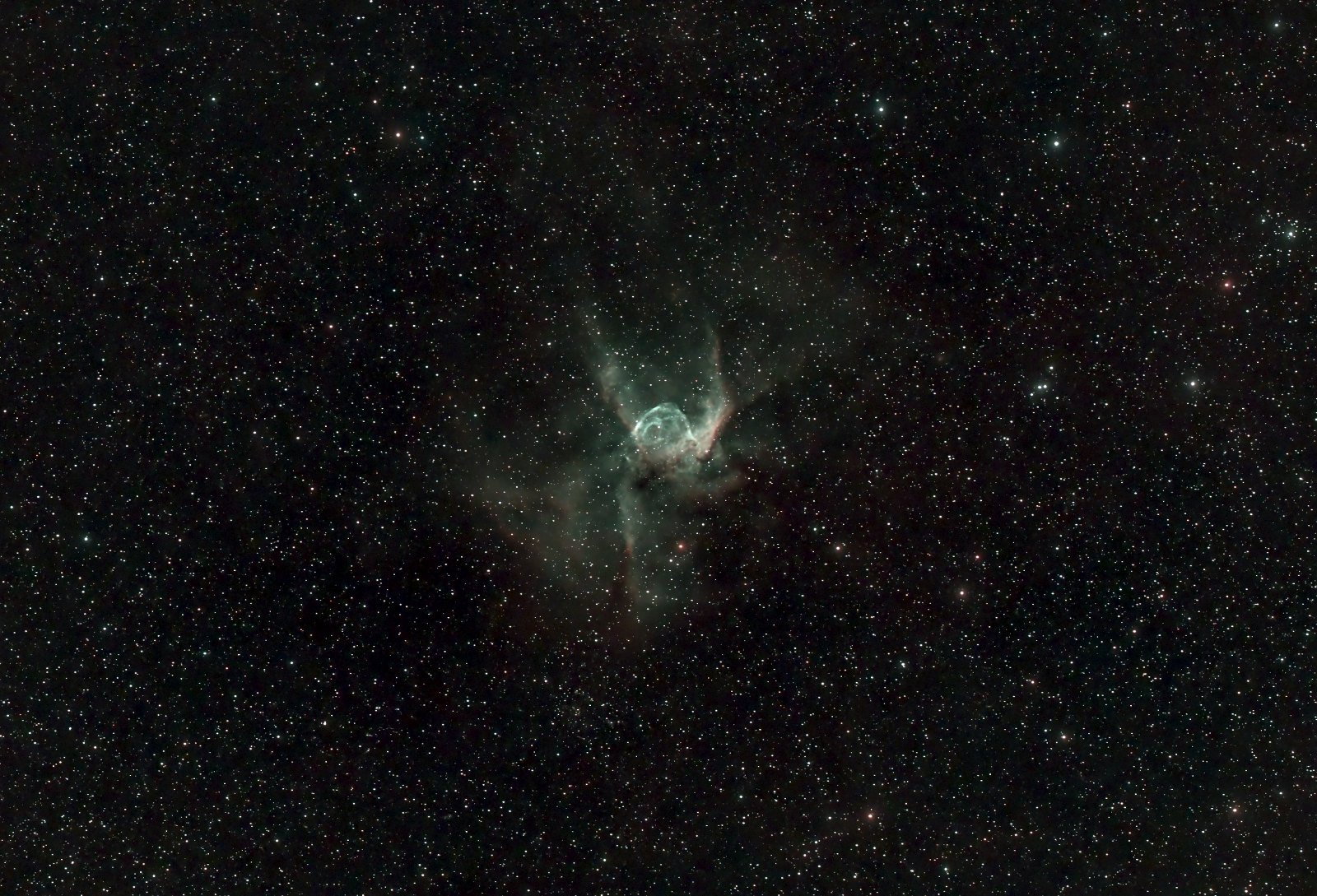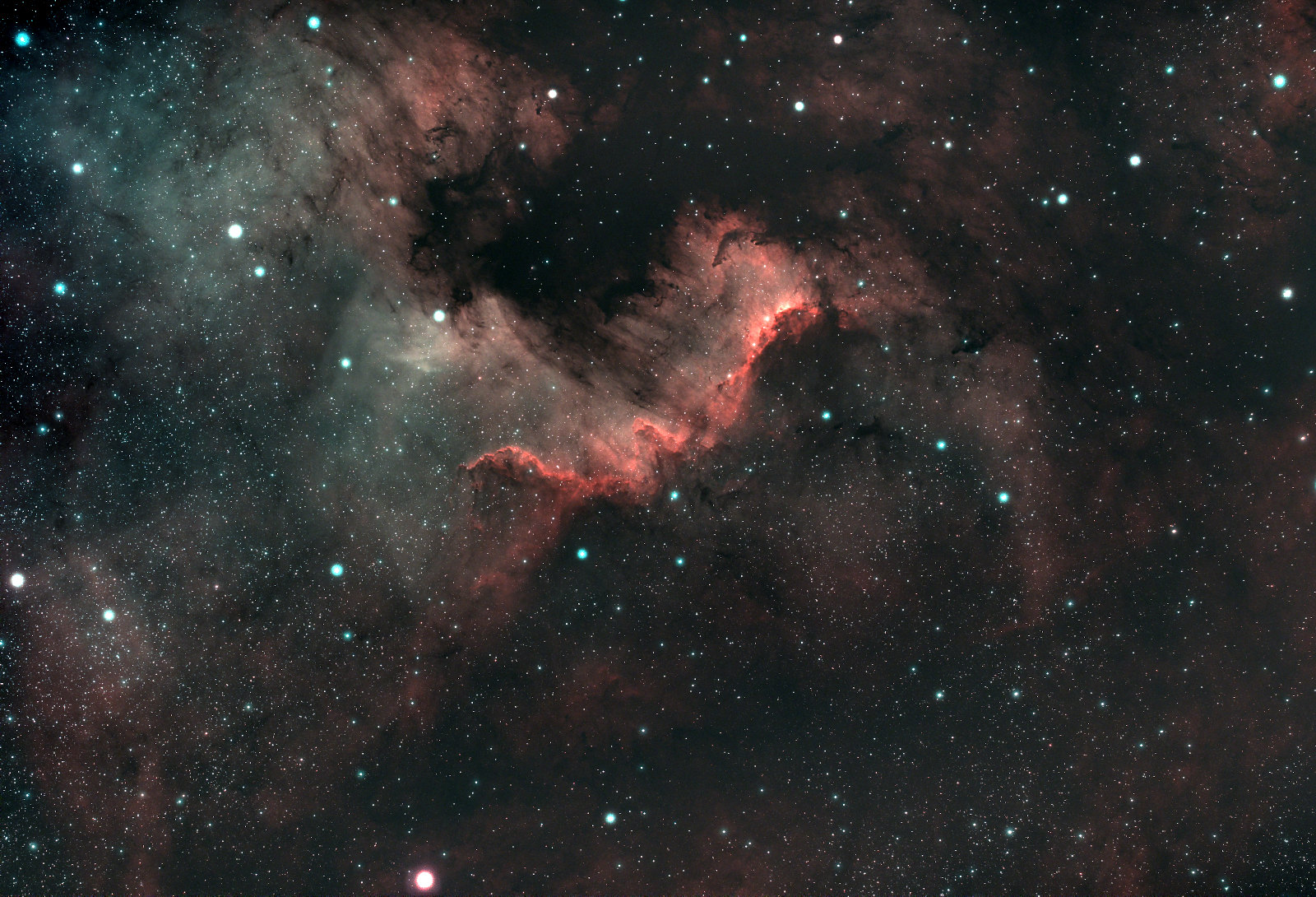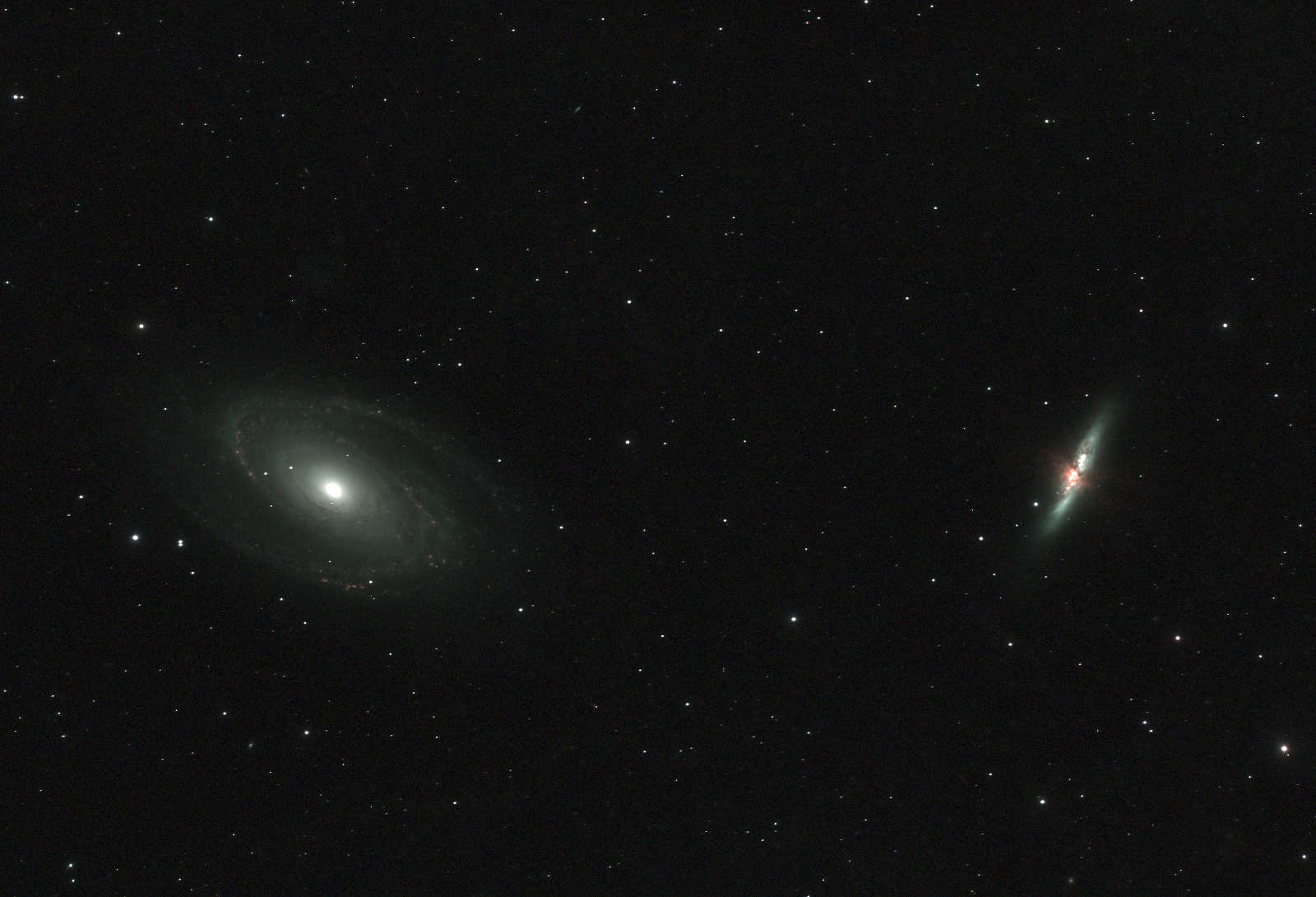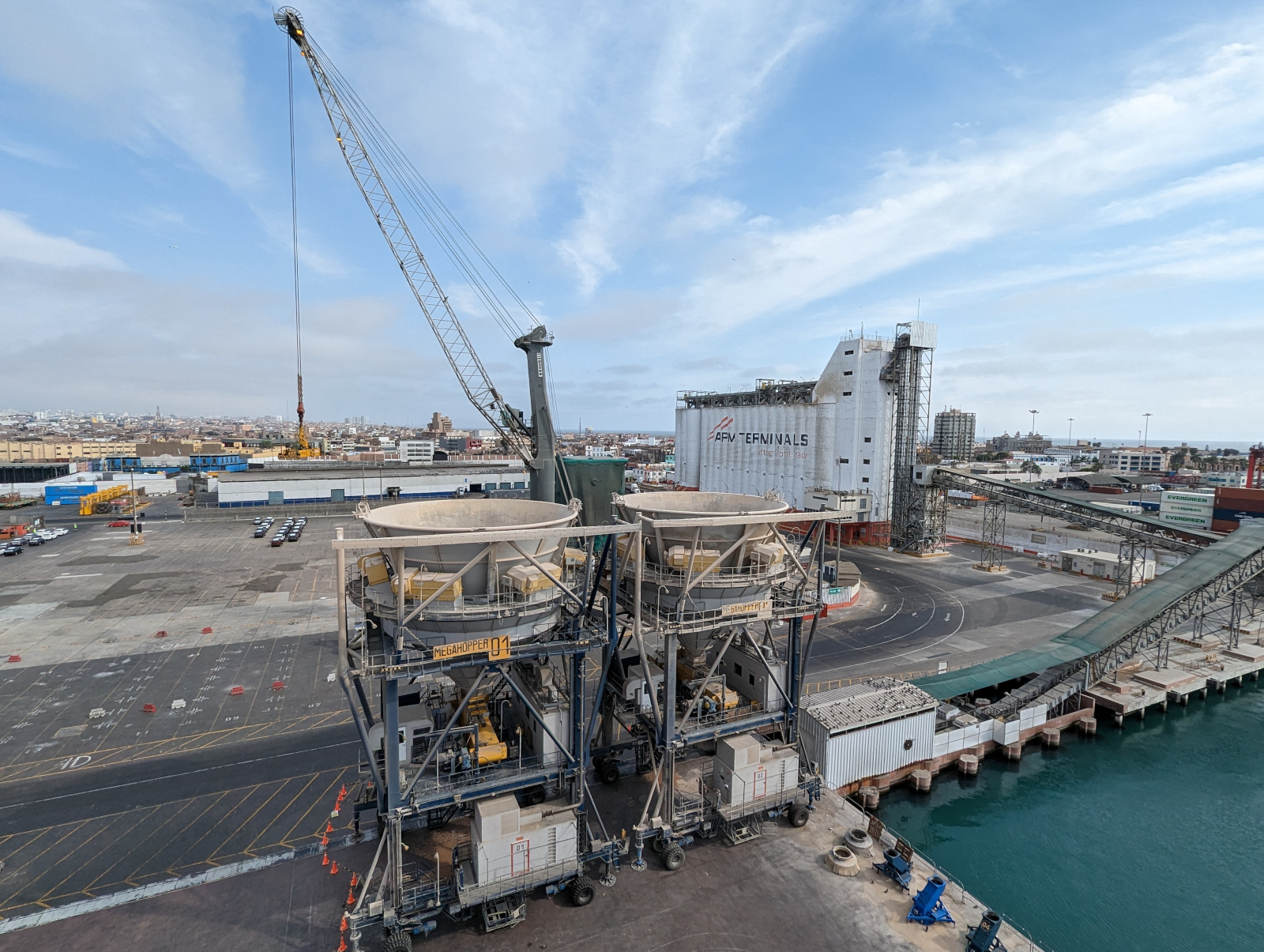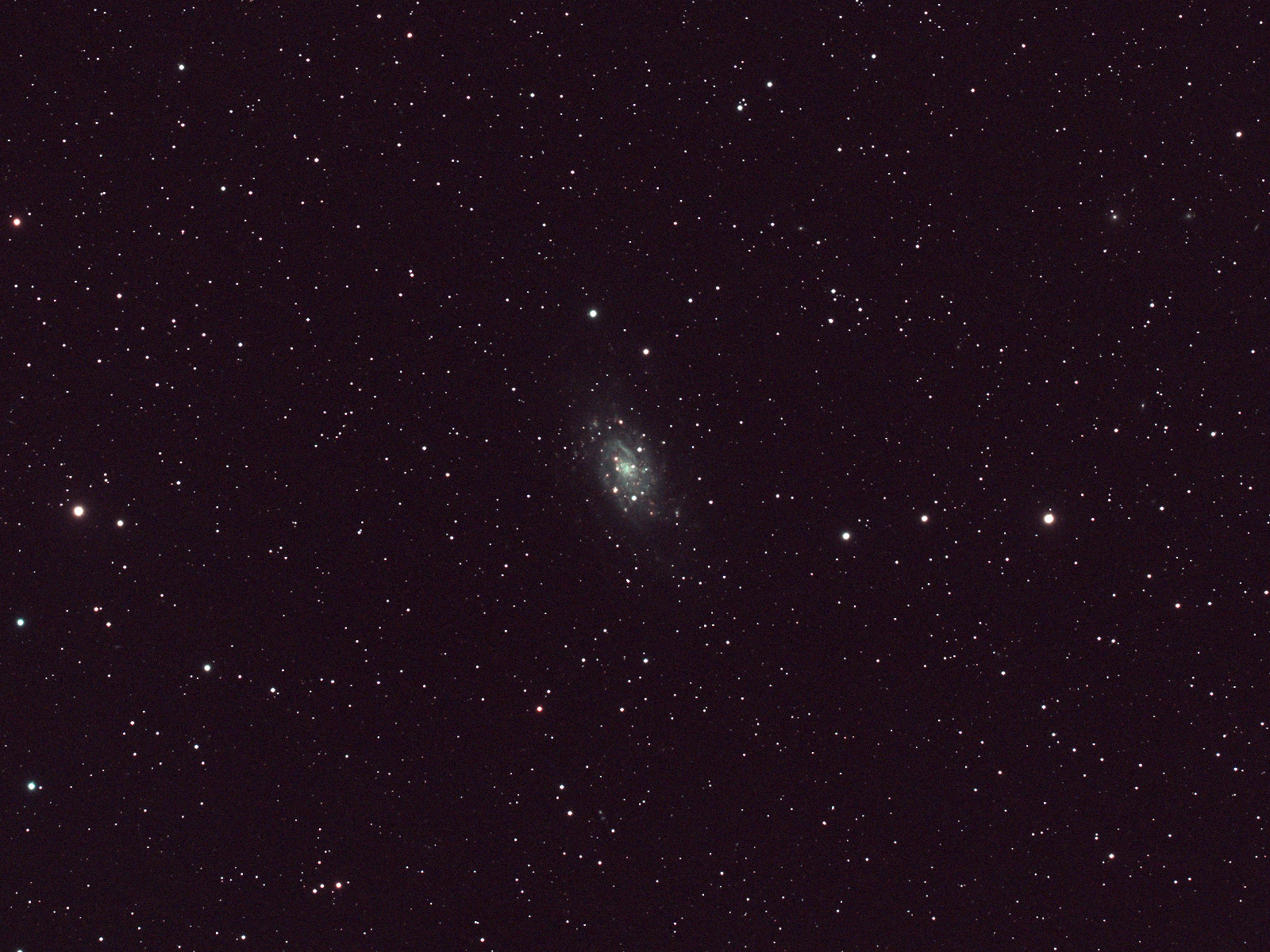More commonly known as the Rosette Nebula, SH2-275. A quick snap as I waited for the comet to rise. The colors are a little weird, foreboding, almost.
Thor’s Helmet – SH2-298
Day before yesterday, I unpacked the telescope from its tiny rain shed and managed to snag a few frames of SH2-298. Feast your eyes on the aptly named “Thor’s Helmet”! It is a new object for me, and I was happy to get this image.
Last night I had every intention of getting an image of comet C-2022-E3. Conditions were good, but sleep overtook me. (The comet doesn’t get above the trees until after midnight.) But tonight, sky willing, I will photograph C-2022-E3.
It won’t visit us again for 50000 years. If we get our shit together we might visit it before it visits us.
Dragonfly Cluster, aka the Owl Cluster
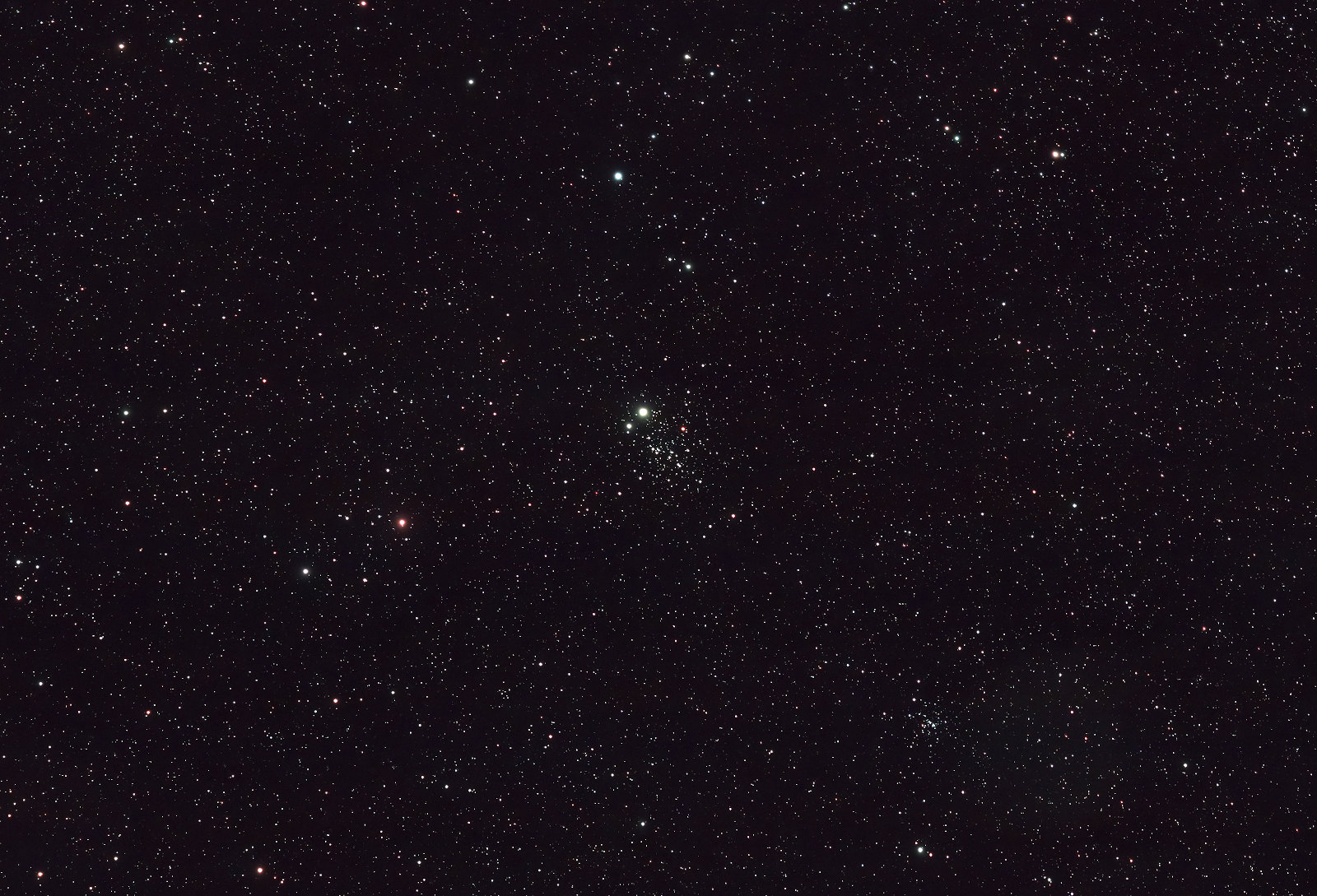
By the naked eye, the night sky is only tiny points of light, occasionally blotted out by the moon. The enormous clouds of gas and dust, the majestic galaxies, are mostly invisible. So sometimes it’s nice to just see stars.
While the cluster looks more like an owl, I can also see the two bulbous eyes of a dragonfly and maybe a hint of a slender body.
Reprocessing reprocessing…
I’ve purchased a new plugin for PixInsight, called “BlurXTerminator” (BXT). It uses AI trained on astronomical data to sharpen stars, and the edges of nebula. It seems to work pretty well.
Here is a reprocessed version of the “Cygnus Wall” (part of NGC7000, the North American Nebula):
BXT actually works. This image is significantly sharper and more detailed than my previous version (though you have to look close). I worry if the new detail is “real” or manufactured? Is this picture a more accurate representation of reality?
Here is a reprocessed version of M81 and M82. The data for this image was collected back in February.
The major problem with this image is the overexposure of the central region of M81. One of these days I will work out the technique for fixing that, but for now, this isn’t bad. Once again, if you look closely, the enhanced fine delicate detail is apparent.
On a completely different topic, I started reading “A Tale of Two Cities” recently. Man, it’s so clear that Dickens was being paid by the word…
Megahopper
From Lima, Peru
We arrived at the Lima international airport, and were whisked to our hotel, the JW Mariott, to recover from our 24-hour ordeal flying from SFO. The next morning we transferred to the ship where we would live for the next 21 days, cruising the Chilean fjords, then around Cape Horn.
The plan was to depart that evening, but it didn’t work out — shortly after our arrival at the airport, a serious accident happened on the single runway and blocked all air traffic for a day. There were no flights for disembarking passengers to fly home, and the passengers on arriving flights couldn’t land and thus couldn’t join the ship.
Information about the accident has been hard to find. There was a plane taking off, and a firetruck, possibly on a training mission, collided with the tail section. Two firefighters were killed, but everyone on the plane survived. However, the plane couldn’t fly, and the crash would have to be investigated. The wreckage blocked the runway for more than a day. Flights were diverted or canceled, and temporary lodging had to be found for stranded passengers from literally around the world. Several hundred people were affected.
The upshot was that the ship delayed its departure for two days while the cruise company scrambled to make new arrangements for their customers. We were lucky to get on the ship at our scheduled time.
NGC2403, through the murk
Testing Fediverse Connection…
The activitypub plugin, according to the writeup at
makes your wordpress blog into a Fediverse Server. Indeed, a mastodon search found “@mosqueeto”. I’ll see if this post shows up in my timeline…
Mendocino Coast
Catching up on astrophotos
The days are clear, but the mist rolls in about midnight, so it’s been difficult to take any pictures. Here are a few from the last month or so…
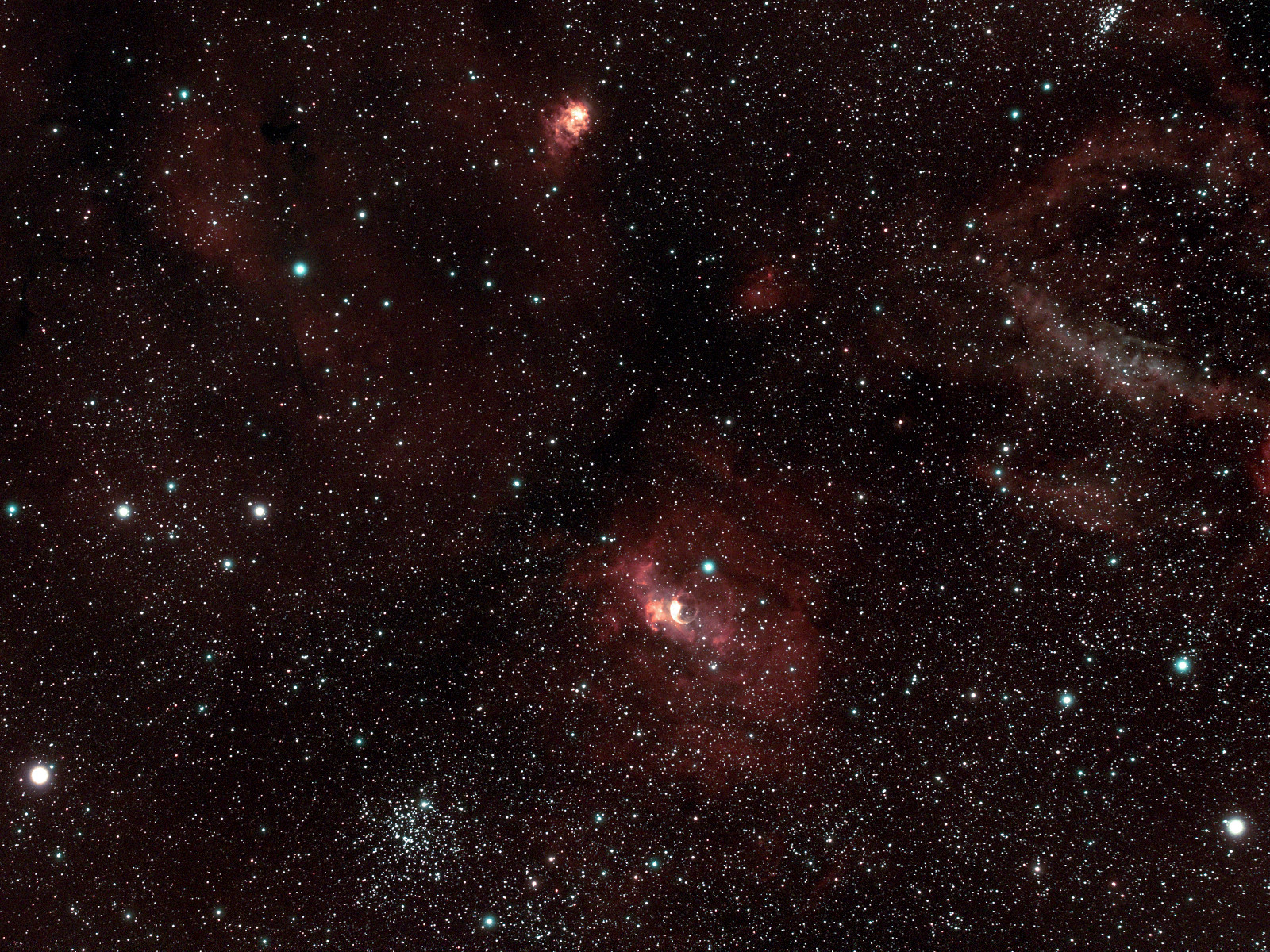
NGC7538 is sometimes called “The Brain” or “The Northern Lagoon”. It’s the bright knot at the top center. M52 is the open cluster bottom left of center.

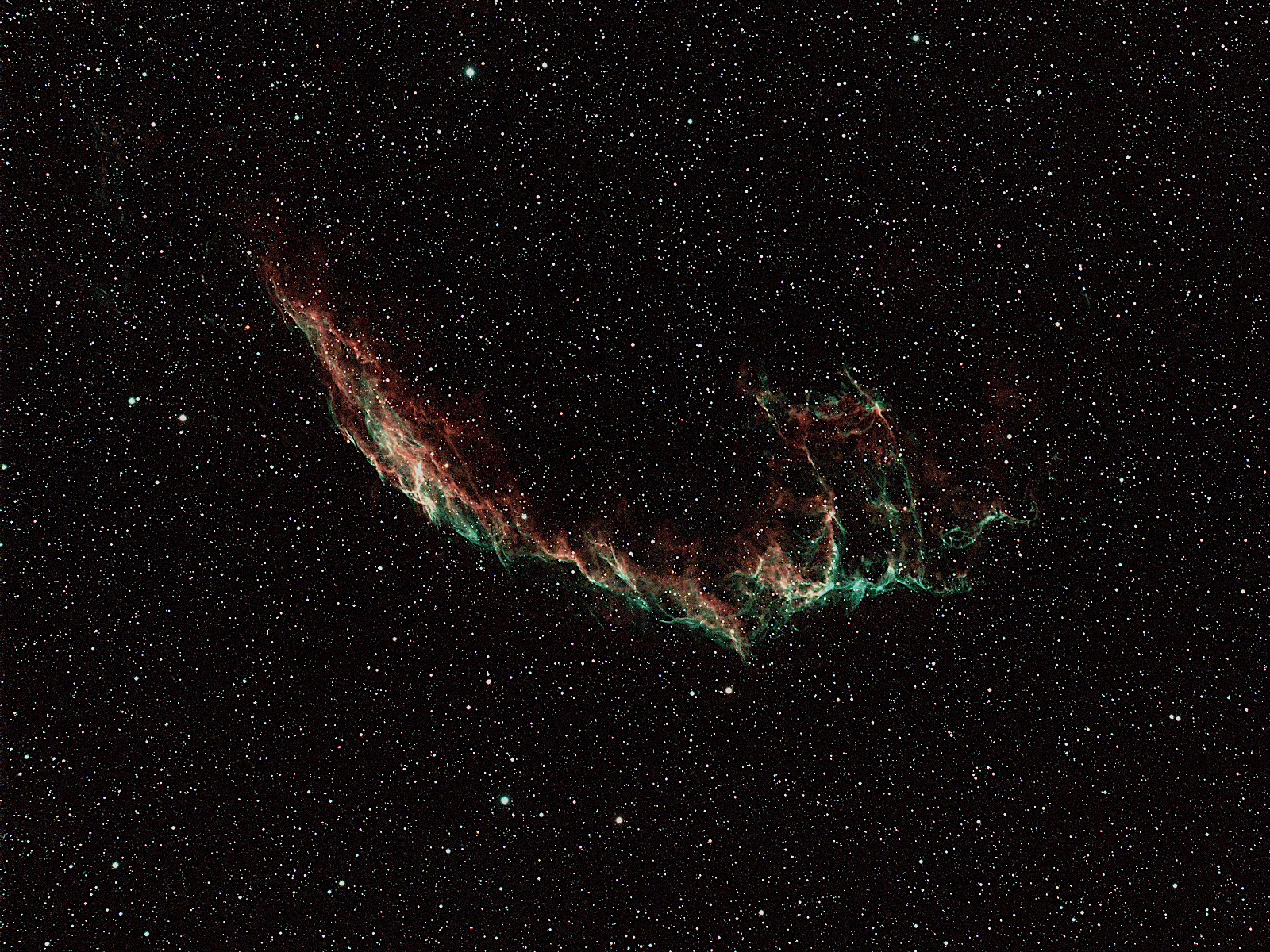
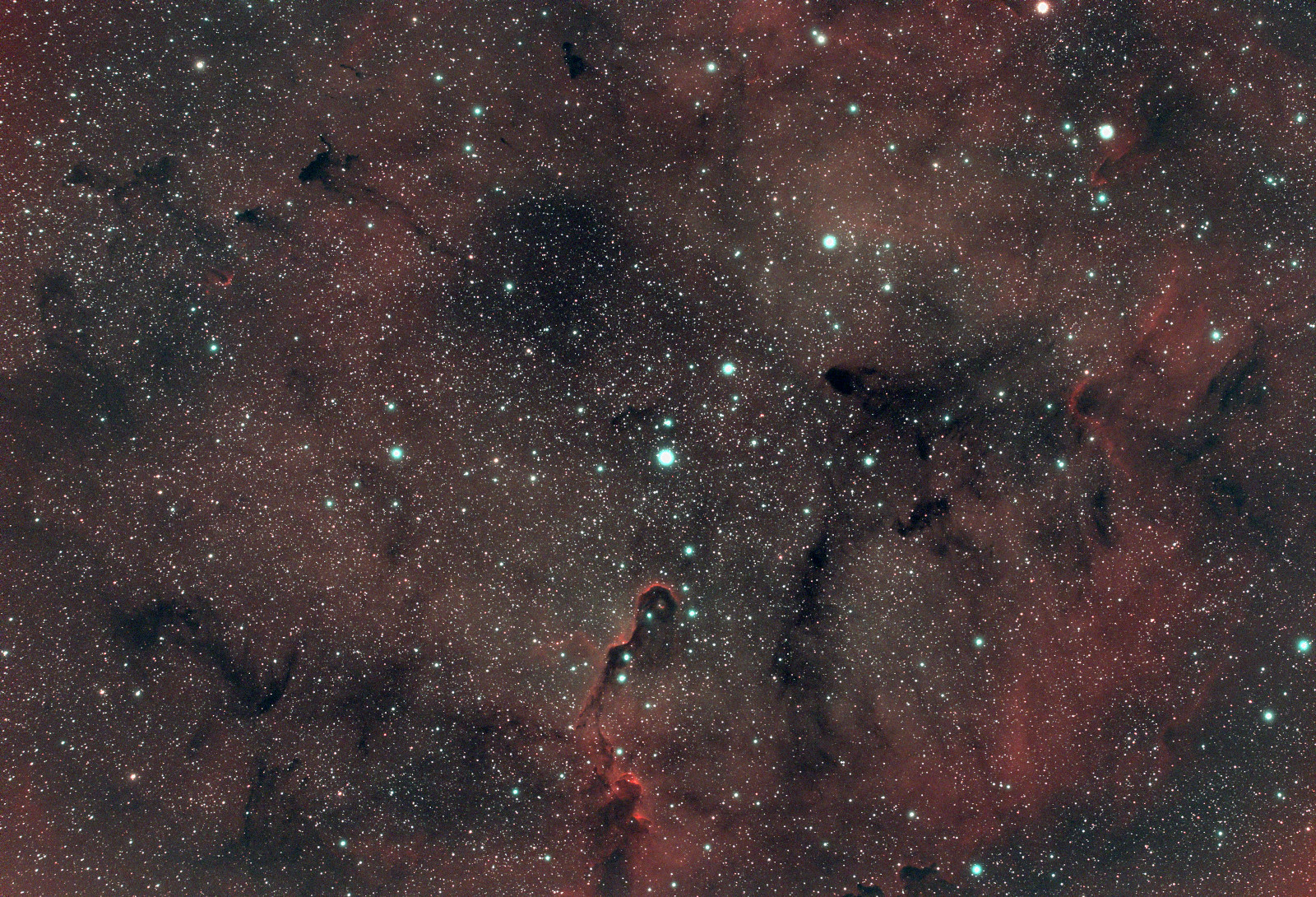
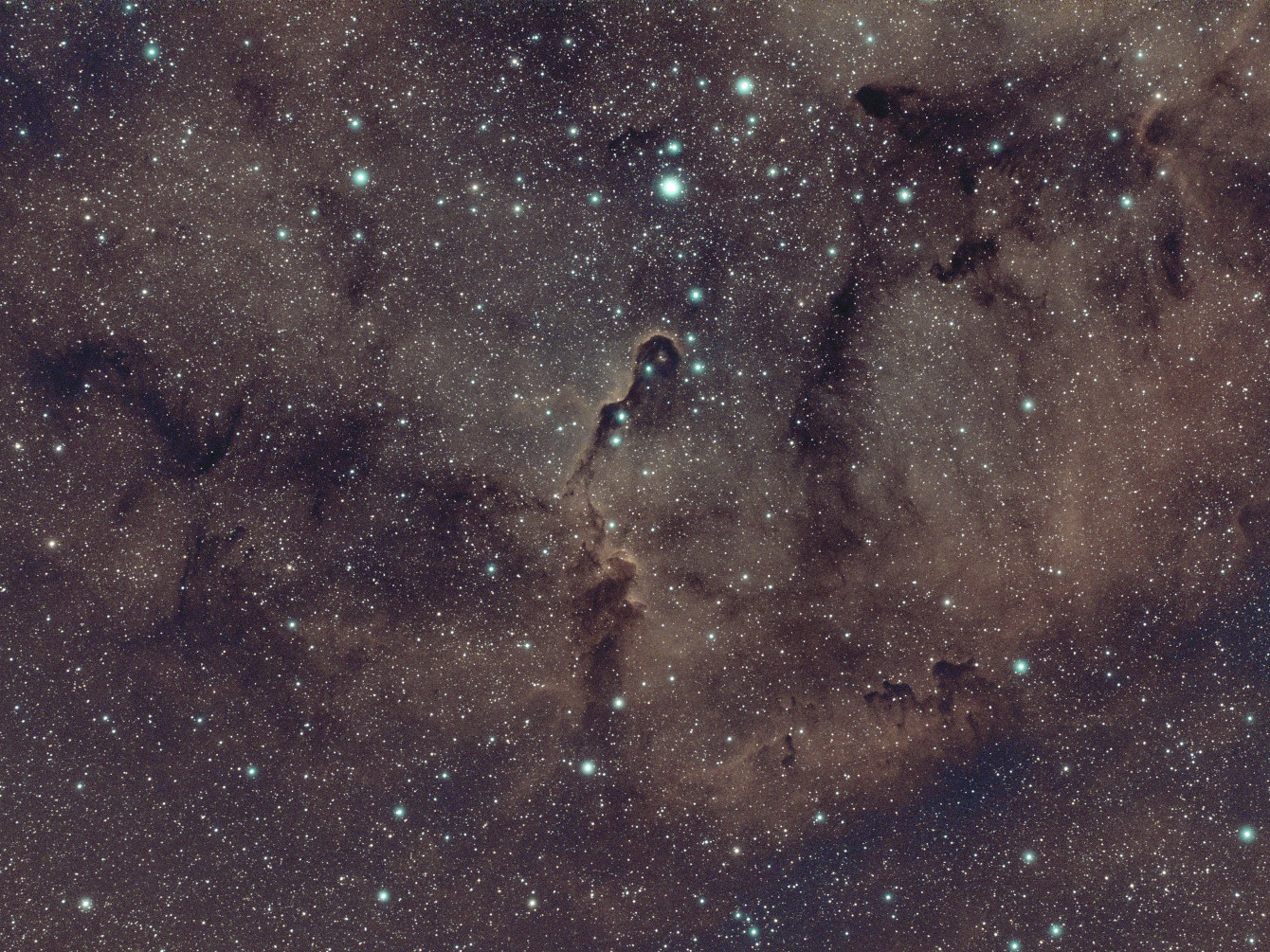

Someday, maybe, I’ll move to a mountain top, with clear dark skies. For now, I live in haze and city lights.
